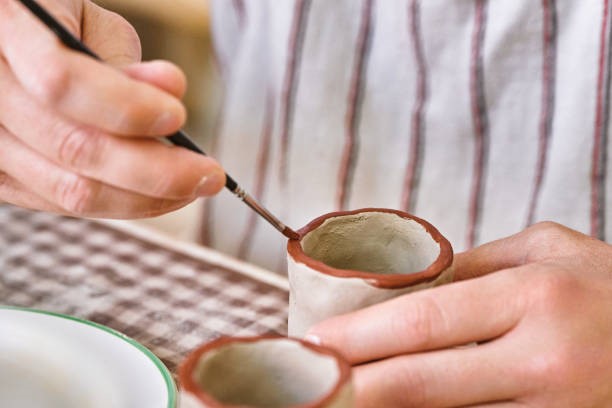Potters have spent their outstanding efforts to master copper red glazes for centuries now. These glazes have rich shades that can have a mesmerizing effect on just about any onlooker. The copper red glaze magic has long been practiced to bring to life some of the best pottery pieces in human history. This article will highlight the proven recipes for pottery perfection that use essential elements like oxides, kaolin, feldspar, and more. You will also learn about this glaze’s unique characteristics and historical background while we are at it.
Understanding Copper Red Glazes
Copper red glazes have their beauty. Their distinctive characteristics add richness and a historical background, making their existence meaningful. Here is what you should know:
- Unique Characteristics
The unique characteristics of copper red glazes are widely renowned. Let us look into some of the most prominent ones:
| Characteristics | What Do They Entail? |
| Color | Rich, vibrant red hues with varying degrees of transparency |
| Surface Texture | Smooth, glossy finish or subtle variations in texture |
| Reaction to Atmosphere | Sensitivity to firing conditions, particularly reduction |
- Historical Significance
Copper red glazes hold a renowned position amongst all glazes. It can be dated back to the ancient East Asian pottery traditions. It is seen in the entire Tenmoku and Sang de boeuf styles of the Ming Dynasty. People who are into these designs often collect and try to mimic the effects of such pieces in their work. CmengAo Colorful Tenmokus Tea Cup is a perfect collectible for those interested in the copper red glazes from ancient times. It comes out of the kiln with a different fiery effect every time, so you will have a unique design. Copper red glazes hold expert craftsmanship and only the finest artistic talents.
Proven Recipes for Copper Red Glazes
Now we move to the main agenda: the proven recipes for copper red glazes. These recipes combine various styles like Tenmoku ceramics, reduction, and Sang De Boeuf. Let us see what each recipe holds and how you can put them together in no time:
Recipe 1: Traditional Tenmoku-Based Copper Red Glaze
The first recipe that we have is a traditional Tenmoku-based copper red glaze. It draws from the prominent Tenmoku designs that work on the principles of copper red glazes. Let us get into it:
Ingredients and Proportions
- Copper oxide: 4%
- Iron oxide: 2%
- Feldspar: 60%
- Kaolin: 30%
- Silica: 4%
Firing Temperature and Atmosphere
- Cone 9-10 (1300-1350°C)
- Reduction atmosphere
Tips for Application
- Put on at least 2-3 coats
- Use a softer brush
- Fire in a reduction kiln with controlled oxygen levels
- Try out different firing schedules to get the right color and surface effects
Recipe 2: Reduction Copper Red Glaze
Next is the reduction copper red glaze recipe, which uses the highest reduction temperatures. Higher temperatures are known to reveal a burst of effects across the piece. Let us see how to achieve this:
Ingredients and Proportions
- Copper carbonate: 2%
- Tin oxide: 2%
- Feldspar: 50%
- Whiting: 20%
- Kaolin: 20%
- Silica: 6%
Firing Temperature and Atmosphere
- Cone 9 (1250-1300°C)
- Strong reduction atmosphere
Tips for Application
- Try for a thin application that is translucent. Try for a thicker coat if you like opaque finishes.
- Only fire in heavily reduced environments for a stronger color
Recipe 3: Copper Red Sang De Boeuf Glaze
The last recipe is the copper red Sang De Boeuf Glaze, made for a perfect piece. This recipe is for those who have mastered the previous glaze recipes and want to create more refined wares. Let us put this one together:
Ingredients and Proportions
- Copper oxide: 3%
- Iron oxide: 1%
- Cobalt carbonate: 1%
- Feldspar: 50%
- Kaolin: 30%
- Silica: 15%
- Bentonite: 2%
Firing Temperature and Atmosphere
- Cone 8-9 (1220-1280°C)
- Neutral to a slight reduction atmosphere
Tips for Application
- Only put strong, thick coats
- Fire slowly for a mature effect
- Adjust cobalt across various pieces for blue undertones
Conclusion
Ceramic creation sees new developments and experimentation over time. One style of glazing that stays on is the Copper Red Glaze. This impressive glaze has helped artists realize their signature techniques in ceramics for so long. Its unique characteristics and historical significance make it an even more prominent glaze type. You can try this glaze today and see where it takes you!







